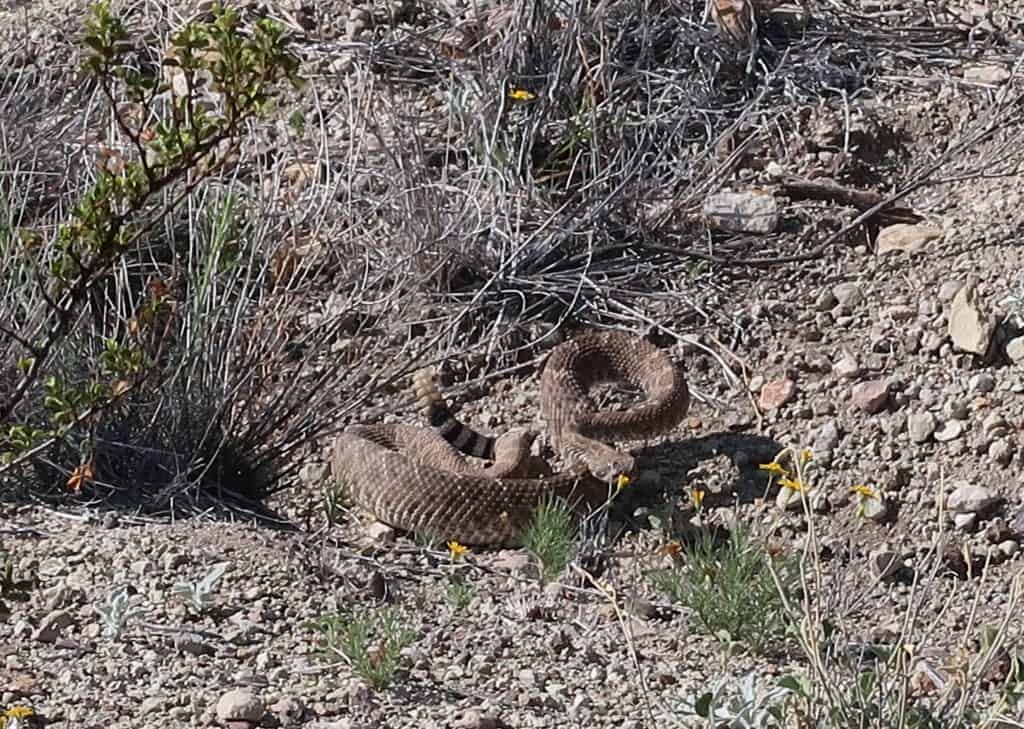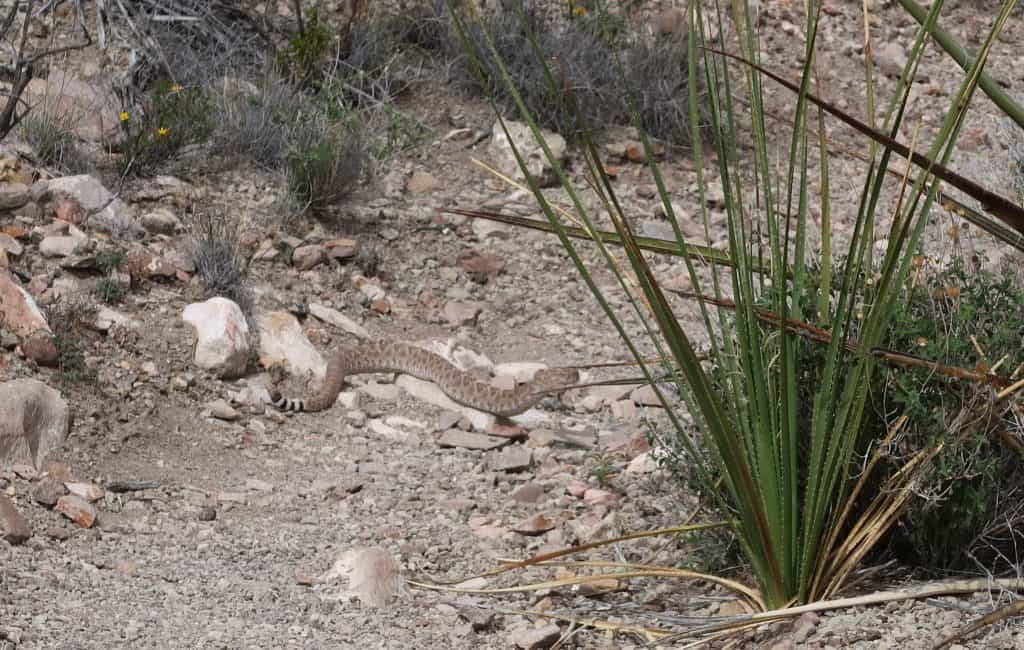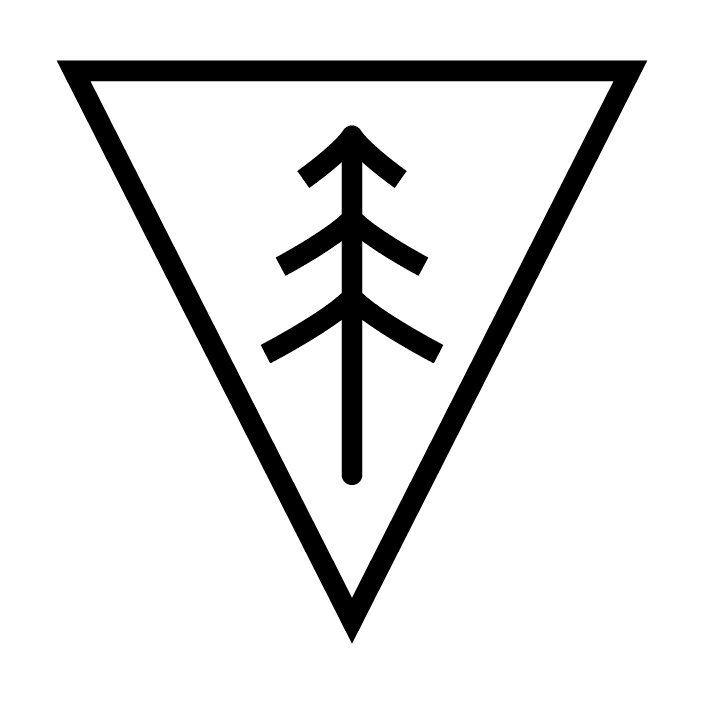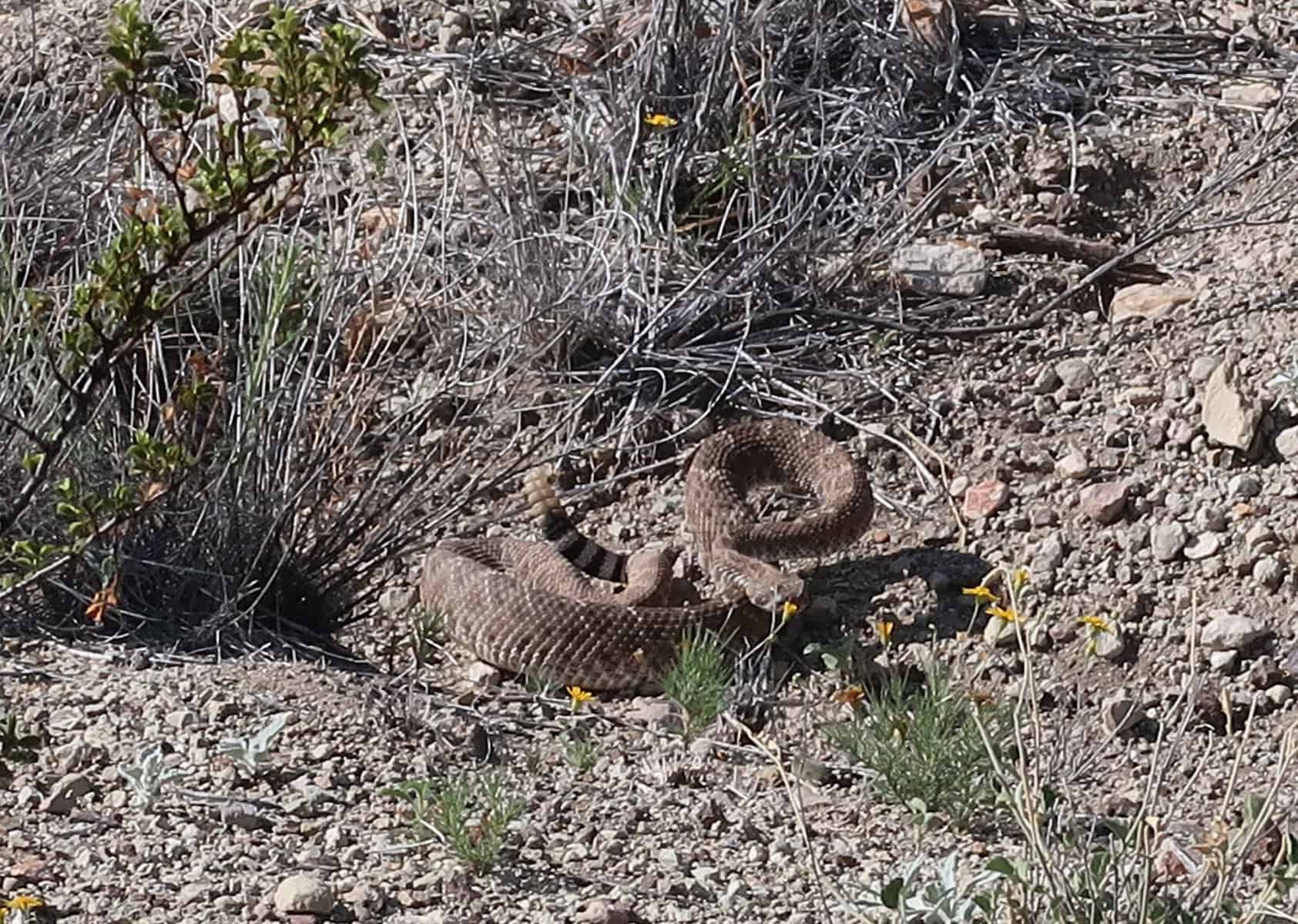Below is a guest post from my husband, Ryan, who recently returned from one of his thrice-annual trips to
Big Bend National Park.
One of the things I love about Big Bend National Park is the variety of climates and experiences it offers – you can be on the river, in the desert, or up in the mountains. I’ve hiked most of the day hikes in the park, but one that I hadn’t done before was Ward Springs which starts right off the shoulder of the Ross Maxwell Scenic Drive, down in the Chihuahuan Desert.
As I got started, my mind flicked back to the Western novel I had been reading at my campfire the night prior. There was a chapter where a bunch of Americans were blockaded in a fort down in Mexico after an Apache attack. There was a horse that had been bitten by a rattle snake and the description of it’s effects was less than pleasant.
As I was hiking, I was thinking about that scene and was wondering what the best protocol would be if a hiker were to be bitten by a rattlesnake.
Do I go to a Ranger station – do they have anti-venom? Do I go straight to the hospital? Where is the closest hospital? Do I just sit down and hit the SOS on my GPS beacon?
There are thirty-one species of snakes in Big Bend, but only two are venomous: the rattlesnake and the copperhead.
In all my decades living in Texas, I’ve never seen a copperhead in the wild, but we always hear about rattlesnake sightings because it is the one that let’s you know it’s there. There are four species of rattlesnakes in Big Bend: the western diamondback, the black-tail, the rock, and the mojave.
Just a note – there is a difference between poisonous and venomous. Snakes are not poisonous, they’re venomous. The best rule of thumb to follow is if it bites you and you have a reaction then it’s venomous, but if you bite it and have a reaction, it’s poisonous. Think of the poisonous apple that Snow White eats from the evil queen disguised as an old woman. [Legal Disclaimer: do NOT bite snakes.]
Anyways, so I’m hiking down the trail, specifically thinking about snake bites and keeping my eyes on the ground 10-12 yards ahead of my feet. I figured that if I’m looking at my feet, I would be right up on a snake before I knew it was there.
Well, let me tell you, they blend in SO, SO well!
I was scouring the trail up ahead of myself and a rattle went off RIGHT infront of me and I leapt backwards with my heart in my throat.

Thank God for the rattle!
Once I got my wits about me, I got a visual of the snake and established that I was a safe distance from it. I took an additional step backwards every 15-20 seconds to see if it would calm down, stop rattling, and slither off. I kept backing up and backing up until I got to a point where I couldn’t even see it – and I didn’t like that, so I moved back up to where it was just visible.
When I first heard its rattle I was about 3 feet from it which, for me, is about one big step. That was close enogh to make it VERY angry at a me and it rattled continously for a good 6 to 7 minutes before I decided it wasn’t going to give up any ground, so I conceded, gave it a respectfully wide berth, and detoured around it.
Snakes have notoriously poor eyesight but they use their tongue to smell. When they flick it out, it carries back molicules that they are able to use a special organ in the roof of their mouth called a vomeronasel system to identify whatever it is in it’s path.
It’s head followed me the entire time I was detouring around it, which I felt was pretty remarkable given that I knew they had such poor eyesight. I, apparently, am not one who should make any disparaging comments on eyesight!
From the moment I was back on trail and out of earshot of the snake behind me, every sound and movement had me jittery – lizards scurrying off into the brush, the sound of the nylon shoulder strap on my pack sliding on my polyester sunshirt, every root and broken octillio stem on the ground, the roadrunner fluttering up the trail ahead. I was moving at a much slower, cautious pace.
I got to the spring at the end of the trial and on my way back, came across a second rattlesnake. This one I saw sunning itself across the trail about 15 yards ahead of me, and even though I saw it, I did still startle a bit when it’s rattle went off.

This one never coiled – it raised it’s head at me for about a minute stopped rattling and then slithered into the brush off to the right of the trail. I couldn’t see if it came out the other side of the brush but I didn’t want to take any chances so I again gave a respectful wide berth and detoured well around it.
Later in the day, when at the visitor center I asked the ranger my initial question – what is the best thing to do if you are bitten by a rattlesnake in the park?
The answer she gave was not the ideal one I wanted to hear – she said to get yourself to the Alpine medical center as fast as you can because they do not have any anti-venom in the park. Not super reassuring but good to know for the future.
After some research, I determined that both of the rattlesnakes I encountered were western diamondbacks. The patterning was consistant and there is a little black at the end of their body just before their rattles. They happen to be the most common in the park and they are the most aggressive, which explains why the first one I saw never backed down.
I’ve always wanted to see a bear and a mountain lion in Big Bend but that hike cemented to me that I need to be more on the lookout for the species closest to the ground.
Takeaway:
If you or anyone in your party is bitten by a rattlesnake in Big Bend National Park, drive directly to the Alpine Medical Center. Keep these directions printed in your car, as there is little service in the park:
From the eastern portion of the park, take HWY 385 north, and make a left on HWY 90 in Marathon. From the western portion of the park, take HWY 118 north out of the park, through Terlingua, and make a left when you hit HWY 90 in Alpine. It should be three blocks down on your right. Either trip will be around 100 miles.
Read more on the best time to visit Big Bend National Park.

